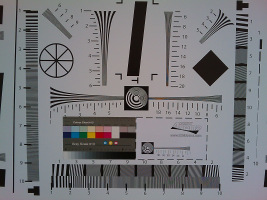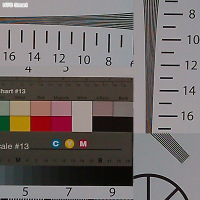HTC Smart
Being a veteran in the smartphone market is huge advantage when you decide to come up with something new. After so many Windows Mobile and Android devices, HTC surprised us with a completely different product – HTC Smart. It’s a semi-smartphone that runs on the unusual Brew Mobile platform strengthened with the fancy Sense UI.
Throwing another mobile OS on the market is hardly the right move since the smartphone arena is already over-crowded. But it seems HTC Smart is HTC’s way of making a feature phone. The Linux-based Brew Mobile platform used for the HTC Smart hardly makes it a proper smartphone to boot. Truth is, there are modern touch feature phones that have more “smart” in them than this one.
But enough about software, let’s see what HTC Smart has to offer in terms of hardware.
Key features
- Quad-band GSM/GPRS/EDGE support
- 3G with HSDPA 3.6 Mbps
- Brew Mobile software platform with HTC Sense UI and social networking integration
- 2.8" resistive touchscreen of QVGA resolution
- 300 MHz processor, 256 MB RAM, 256 MB ROM
- 3.15 megapixel fixed-focus camera with LED flash
- Standard miniUSB port for charging and Mass Storage data transfers
- Stereo Bluetooth (A2DP)
- microSD card slot, up to 16GB support
- Standard 3.5mm audio jack
- Smart dialing
- Stereo FM radio with RDS
- Excellent loudspeaker performance
Main disadvantages
- No Wi-Fi connectivity
- QVGA resolution doesn’t do Sense UI graphics justice
- Screen has poor sunlight legibility
- No video-call camera
- No voice dialing
- Camera lacks auto focus, records QVGA@15fps video only
- Only few applications preinstalled and no access to app repository for native BREW apps
- Limited organizer functions – no notes/memo, no voice recorder or an office document-viewer
- No multi-tasking
- Web browser poor and rather slow
Exploring its features and the possible drawbacks leaves us with mixed first impressions from the HTC Smart. But we are still in the beginning of our Smart meeting and things may still change.
HTC Smart is a stylish, pocket-friendly device powered by a new OS and skinned with one of the best mobile user interfaces – the Sense UI.
Boring camera
HTC Smart is equipped with a 3 megapixel fixed-focus camera for a maximum image resolution of 2048 x 1536 pixels. There’s also a LED flash.
The camera interface is quite basic with a camera/camcorder switch and a flash button. Hitting the "Menu" reveals six buttons on a bar at the bottom of the screen. The rightmost can lead you to an Advanced settings menu. There you can set some color effects, brightness and contrast of the photos, toggle digital zoom and go to the gallery.
HTC Smart produces camera images with generally poor image quality. The phone’s camera underexposes most shots producing dark images with undeveloped shadows. The amount of resolved detail isn’t that bad and the colors are close enough but the output is not really satisfactory. You can check it the original camera samples below.
Synthetic resolution
We also snapped our resolution chart with the HTC Smart. You can check out what that test is all abouthere.


HTC Smart resolution chart photo • 100% crops
Video recording
HTC Smart is capable of recording QVGA video with 15 fps, which isn't something to write home about. It still is better than nothing, but it’s hardly suited for anything more than MMS purposes.
The camcorder interface is almost identical to the still camera's. It sports a setting for picking between MP4 and 3GP (H.263) encoding, which theoretically should give you the choice between smaller file and a higher-quality video. In practice the low resolution makes sure that the differences between the two formats aren't really so obvious.






















No comments:
Post a Comment